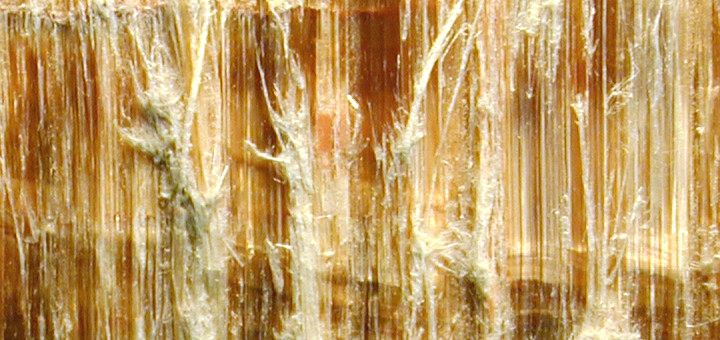Asbestos in your home, and what to do about it

Asbestos is found in more than half of all British homes, and in thousands of commercial properties. Widely used in numerous construction materials for several decades, asbestos is now recognised as an extremely hazardous material, and was finally banned in 1999.
What is asbestos?
Asbestos is a fibrous mineral that is mined from the ground. There are six different types of asbestos, and the most frequently used were chrysotile (white asbestos), amosite (brown asbestos) and crocidolite (blue asbestos).
Unfortunately, asbestos has been linked to a number of fatal diseases, and is responsible for more than 5,000 deaths in the UK each year. The most common diseases include mesothelioma, asbestosis, asbestos-related lung cancer and pleural thickening. Many asbestos-related diseases develop years, or even decades, after exposure, and are caused by fibres lodging in lung tissue.
How do I know if my home contains asbestos?
Identifying asbestos in your home can be difficult, even for a professional surveyor. This is because asbestos was often used as an additive for other materials, rather than on its own in a pure form.
Asbestos has a number of useful properties, such as resistance to thermal and chemical damage, which made it a popular additive in construction and building materials. There are more than 3,000 different products made from asbestos, ranging from roof tiles to toilet cisterns.
To correctly identify asbestos-containing materials, asbestos laboratory testing is required. In some cases, materials containing asbestos were marked or imprinted with identifying tags, but this was not commonly used by manufacturers.
What asbestos services are available?
When most people think of asbestos-related services, they normally think of asbestos removal. However, there are a number of other services available, such as testing and management.
Below is some more information on the different asbestos services available to consumers.
- Asbestos surveys – If you suspect your property may contain asbestos materials, you can have a survey conducted. This involves a qualified professional examining your property, and collecting samples for detailed analysis. Surveys are often a requirement for commercial buildings, and are useful before demolition and construction work is carried out on older properties.
- Asbestos testing and sampling – Sampling involves the collection of suspected asbestos-containing material fragments, which are then tested in specialist laboratories. These tests will confirm the presence of asbestos, if any, as well as providing information on the type of asbestos.
- Asbestos removal – Asbestos is extremely dangerous, and many homeowners opt to remove it from their properties. In most cases, asbestos removal should be left to trained experts, who will follow the correct procedures to ensure the hazardous materials are safely removed. Asbestos removal is often thought of as expensive, but there are a number of factors that influence the price of asbestos removal, including the property size and ease of access. Many removal projects, such as garage roof cement sheets, can be quick and affordable.
- Asbestos encapsulation – A cheaper alternative to asbestos removal is encapsulation. This method involves coating asbestos-containing materials in a resin, which ensures the dangerous fibres cannot escape.
- Asbestos disposal – Due to the dangers associated with asbestos, it is essential that correct disposal procedures are followed. Asbestos-containing materials take a considerable amount of time to break down, so should not be buried in your garden. Instead, ACM disposal services are provided by professional contractors and through local councils.
- Asbestos management – In some circumstances, where there is no risk to occupants, asbestos can be left in place. When this option is chosen, ongoing management will be required to ensure the asbestos is in a safe condition, and there is no risk of the dangerous fibres being released.
Have you had asbestos in your home? Share your experiences and tips below.
Photo credit: Karol Pilch






